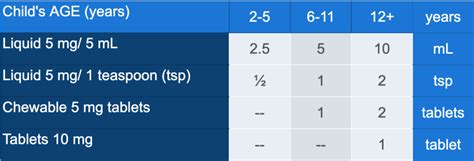Intro
Cetirizine is a medication that has been widely used for several decades to treat various allergic conditions. It is a type of antihistamine, which works by blocking the action of histamine, a substance in the body that causes allergic symptoms. The importance of cetirizine lies in its ability to provide relief from uncomfortable and sometimes debilitating allergy symptoms, improving the quality of life for millions of people worldwide. Understanding what cetirizine is used for and how it works can help individuals better manage their allergies and make informed decisions about their healthcare.
Cetirizine is used to treat a range of allergic conditions, including hay fever, dust mite allergy, pet allergy, and allergic reactions to insects or foods. It is available in various forms, including tablets, capsules, and liquid solutions, making it accessible to people of all ages. The medication is known for its quick action, with symptoms often improving within an hour of taking it. This rapid relief is particularly beneficial for individuals who experience sudden and severe allergic reactions.
The use of cetirizine has been extensively studied, and its effectiveness in treating allergic conditions has been well-documented. It is considered a safe and reliable option for most people, including children and elderly individuals, when used as directed. However, like all medications, cetirizine can cause side effects, and it is essential to be aware of these potential effects to ensure safe use. By understanding the uses, benefits, and potential side effects of cetirizine, individuals can work with their healthcare providers to develop an effective treatment plan for their allergies.
What is Cetirizine?

How Does Cetirizine Work?
The mechanism of action of cetirizine involves the blocking of histamine H1 receptors on smooth muscle, endothelial cells, and in the nervous system. Histamine is a chemical mediator released from mast cells during an allergic reaction, leading to symptoms such as itching, sneezing, runny nose, and congestion. By blocking these receptors, cetirizine prevents histamine from exerting its effects, thereby reducing the severity of allergic symptoms. This action is specific to peripheral H1 receptors, with minimal effect on the central nervous system, which is why cetirizine is less sedating than older antihistamines.Uses of Cetirizine

Benefits of Cetirizine
The benefits of cetirizine include its effectiveness in relieving allergic symptoms, its safety profile, and its convenience of use. It is available over-the-counter in many countries, making it easily accessible for individuals to manage their allergies. The once-daily dosing schedule enhances compliance, especially for individuals with busy lifestyles. Furthermore, cetirizine has been shown to improve quality of life in patients with allergic rhinitis and urticaria by reducing symptoms and improving sleep quality.Side Effects of Cetirizine

Precautions and Interactions
It is essential to use cetirizine with caution in certain populations, such as the elderly, pregnant women, and individuals with kidney or liver disease. Interactions with other medications, such as sedatives, tranquilizers, and alcohol, can increase the risk of side effects. Additionally, cetirizine should be used under medical supervision in individuals with epilepsy or those at risk of urinary retention.Dosage and Administration

Overdose and Withdrawal
In cases of overdose, symptoms can include drowsiness, confusion, rapid heartbeat, and in severe cases, seizures. Treatment involves supportive care and, if necessary, the administration of activated charcoal to reduce absorption. Withdrawal from cetirizine is not typically a concern, as it is not habit-forming. However, stopping the medication abruptly after long-term use may lead to a rebound effect, where allergic symptoms return with increased severity.Conclusion and Future Directions

Final Thoughts
As with any medication, it is crucial to use cetirizine under the guidance of a healthcare provider, especially for individuals with underlying health conditions or those taking other medications. By understanding the benefits and potential side effects of cetirizine, individuals can make informed decisions about their treatment and work towards better management of their allergies.What is cetirizine used for?
+Cetirizine is used to treat various allergic conditions, including hay fever, dust mite allergy, pet allergy, and allergic reactions to insects or foods.
How does cetirizine work?
+Cetirizine works by blocking histamine H1 receptors, thereby preventing histamine from exerting its effects and reducing the severity of allergic symptoms.
What are the common side effects of cetirizine?
+Common side effects of cetirizine include drowsiness, dry mouth, headache, stomach upset, and fatigue.
Can cetirizine be used in children?
+Yes, cetirizine can be used in children, but the dosage varies based on age and should be guided by a pediatrician or healthcare provider.
Is cetirizine available over-the-counter?
+Yes, cetirizine is available over-the-counter in many countries, making it easily accessible for individuals to manage their allergies.
We invite you to share your experiences or ask questions about cetirizine in the comments below. Your input can help others better understand this medication and its uses. Additionally, if you found this article informative, please consider sharing it with others who may benefit from this information. Together, we can work towards a better understanding of allergies and their treatment options.
